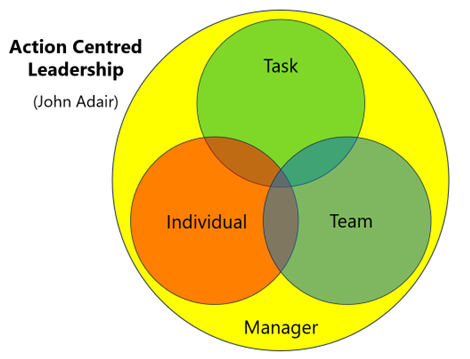Have you ever wondered what jazz music and management have in common? Jazz is a musical genre that originated in the African American communities of New Orleans in the late 19th and early 20th centuries. It is characterised by improvisation, syncopation, swing, and complex harmonies. Jazz musicians often play in small groups, where they communicate and collaborate with each other to create spontaneous and expressive music.
Management, on the other hand, is the process of planning, organising, leading, and controlling the work of a group of people to achieve a common goal. Managers often work in teams, where they communicate and coordinate with their subordinates, peers, and superiors to execute tasks and projects.
While these two fields may seem vastly different, they actually share some similarities and principles that can help managers improve their performance and effectiveness. Here are some management techniques and leadership styles that you can learn from jazz musicians:
- Be Flexible and Adaptable
One of the key features of jazz music is improvisation, which means creating or performing something without preparation or a fixed plan. Jazz musicians improvise by using their knowledge, skills, and creativity to respond to the changing musical situation and the interactions with their fellow musicians. They also adapt to the audience, the venue, and the mood of the moment.
Similarly, managers need to be flexible and adaptable in their work environment, which is often dynamic and unpredictable. Managers need to improvise by using their resources, abilities, and innovation to solve problems and seize opportunities. They also need to adapt to the needs, expectations, and feedback of their stakeholders, such as customers, employees, and partners.
- Hands – on exercise: To practice flexibility and adaptability, you can ask your team to brainstorm solutions for a hypothetical scenario that changes every few minutes. For example, you can start with a scenario like “Your team has to deliver a project to a client by tomorrow, but your main server is down.” Then, after a few minutes, you can add a twist like “The client has changed the requirements and wants a different feature.” You can keep changing the scenario and see how your team adapts and improvises.
- Listen and Communicate Effectively
Another important aspect of jazz music is communication, which means exchanging information and ideas with others. Jazz musicians communicate with each other through verbal and non-verbal cues, such as eye contact, body language, and musical signals. They listen attentively to each other’s playing and adjust their own accordingly. They also communicate with the audience, by engaging them, acknowledging them, and inviting them to participate.
Likewise, managers need to listen and communicate effectively with their team members and other parties. Managers need to communicate clearly and concisely their goals, expectations, and feedback. They need to listen actively and empathetically to their team’s input, concerns, and suggestions. They also need to communicate with their customers, by understanding their needs, delivering value, and building relationships.
- Hands – on exercise: To practice listening and communication, you can ask your team to play a game called “Yes, and…” This is a game where one person starts a sentence with “Yes, and…” and then adds something related to the topic. The next person has to repeat the sentence and add something else with “Yes, and…” The game continues until everyone has contributed something. For example, if the topic is “How to improve customer satisfaction”, the game could go like this: “Yes, and we can ask for feedback after every interaction.” “Yes, and we can offer incentives for referrals.” “Yes, and we can follow up with thank-you notes.” This game helps your team to listen actively, build on each other’s ideas, and communicate positively.
3. Be Collaborative and Supportive
Another essential element of jazz music is collaboration, which means working together with others to achieve a common purpose. Jazz musicians collaborate with each other by sharing roles, responsibilities, and resources. They support each other by giving space, encouragement, and recognition. They also collaborate with other artists, by learning from them, joining them, and creating with them.
Similarly, managers need to be collaborative and supportive with their team members and other colleagues. Managers need to collaborate with their team by delegating tasks, empowering decisions, and facilitating processes. They need to support their team by providing guidance, feedback, and recognition. They also need to collaborate with other managers, by sharing best practices, aligning strategies, and creating synergies.
- Hands – on exercise: To practice collaboration and support, you can ask your team to form small groups and create a short musical piece using whatever instruments or objects they have. For example, they can use pens, cups, keyboards, or phones as instruments. They have to assign roles, share resources, and support each other to create a coherent and harmonious piece. They also have to present their piece to the rest of the team and explain how they collaborated and supported each other. This exercise helps your team to work together, appreciate each other’s strengths, and recognize each other’s contributions.
Conclusion
Jazz music and management may seem like two different worlds, but they actually have a lot in common. By applying some of the techniques and styles of jazz musicians, managers can enhance their skills and abilities to lead and manage their teams more effectively and efficiently. So, the next time you listen to jazz music, pay attention to how the musicians improvise, communicate, and collaborate with each other, and see if you can learn something from them. You may be surprised by how much jazz can teach you about management. 🎶
Further reading





